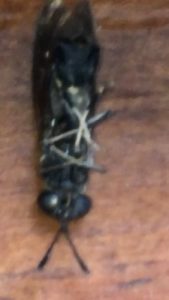


Ladder-like nervous system is the characteristic feature of Platyhelminthes (Fig. The advantage is that the worms can get pre- digested nutrients of the host. Similarly due to specialised musculature, power of locomotion enables the roundworms (Ascaris sp.) to counteract gut peristalsis and to maintain their position in the intestine. The well-developed musculature in Tapeworms (Taenia sp.) helps them to distribute their elongated snake like bodies throughout the length of the intestine of the host. Presence of spinous integument-in many Trematodes.

In gut parasites, however as in Tapeworms, Gnathostomes, Amphistomes and Nematodes-the cuticle becomes thick, impregnated with impermeable chitin like substances and enzyme resistant, so that it is not digestable by the digestive juices of the host but is permeable to water. The parasites live in rich nutritious environments such as liver- flukes (in bile), blood flukes (in blood), Sporocyst larva and Cysticercus (in vertebrate muscles) and other larval forms (developing in lymph spaces and blood stream). The cuticle becomes thin, partly or wholely for food absorption. The cuticle of Helminth is highly modified and adapted to resist against digestive juices and for adhesion. Cyst membrane forms around the body, e.g., Metacercaria larva of liver-fluke. In parasites and particularly in endoparasites there is loss of locomotory organs. (iii) Loss of cilia from the body surface is an indication in this direction.

(ii) Ectoparasites are capable of some free movement but endoparasites have little to do so when detached from the host, Nematodes are the obvious exception to the trend of flattening in parasites and parasitic nematodes, as a whole, show little morphological specialization.Īs the adult parasites live for entire life in the body of the host, the locomotor-organs are usually not necessary for them.Ĭonsequently the locomotor-organs are completely reduced except in the free-swimming larval forms: Fleas are laterally flattened and rely on escape through the hairs. Most parasites are dorso-ventrally flattened and this is related to the need to cling on to the host. This could be related to increased egg production. Many parasites are large compared with their free-living relatives.


 0 kommentar(er)
0 kommentar(er)
